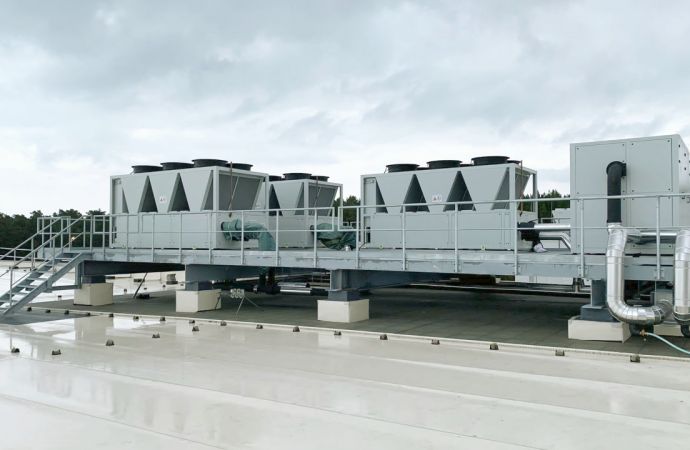The government plans tariffs on home fridges and ACs as well as CO2 compressors if the U.S. goes through with its tariffs.

The Chinese government announced on August 3 that it will impose tariffs on $60 billion worth of U.S. goods, including home refrigerators, chest freezers air conditioners, CO2 compressors, other compressors and refrigeration/heat pump parts, among other HVAC&R products.
This would be a direct response to the U.S. government’s planned rollout in September of an additional 10% import tariff on 6,000 Chinese products, including HVAC&R products, said the People's Republic of China on its Ministry of Finance website.
The tariffs by China would be placed at rates of 25%, 20%, 15%, 10% and 5% across a range of 5,207 items imported from the United States.
A manufacturer of CO2 racks in China told this website that not many CO2 compressors are imported from the US, so the tariff would have minimal influence on the cost of manufacturing racks.
But for certain industry sectors, the tariffs could prove calamitous. The China Household Electrical Appliances Association (CHEAA) warned on its website, that its sector would be affected if the tit-for-tat tariff policy continues. “Portable appliances would suffer most if the U.S.-China trade friction further escalates to a trade war that involves home appliance industry completely,” CHEAA said.
Meanwhile, the 6,000 Chinese imports slated for U.S. tariffs in September, which are worth an estimated $200 billion, include air conditioners, heat pumps, refrigerators, two types of ammonia (anhydrous ammonia and ammonia in aqueous solution), HVAC&R components and some HCFCs.
CHEAA is concerned that “If exports of China’s home appliances to the U.S. dive dramatically under the U.S. high tariffs, it could lead to a supply-demand imbalance and therefore a spike in product prices on the U.S. market.”
U.S. industry has already stated it believes this on-going trade war to be “disruptive” for the industry. “Many of these tariffs have forced our members to raise prices to cover the increased cost of raw materials, which is unfortunate,” said Francis J. Dietz, vice-president, public affairs at AHRI (the Air-Conditioning, Heating and Refrigeration Institute).
“The tit-for-tat tariff situation is disruptive to the business cycles of our members, to the global supply chain, and also to negotiations on treaties like NAFTA,” he added.
It is still not clear if the U.S. tariffs on Chinese goods, or China’s retaliation, will take place.
The U.S. tariffs still require feedback from the public (the deadline is August 17 for written comments). Comments can be submitted through the Federal eRulemaking Portal: www.regulations.gov by following the instructions in sections D and F. The docket number: USTR-2018-0026 also needs to be used. There will also be a public hearing from August 20-23 in Washington D.C. August 30 is also set as the date for “post-hearing rebuttal comments."
If exports of China’s home appliances to the U.S. dive dramatically under the U.S. high tariffs, it could lead to a supply-demand imbalance and therefore a spike in product prices on the U.S. market.”
– China Household Electrical Appliances Association
Related stories




